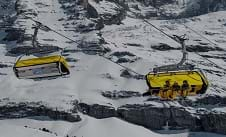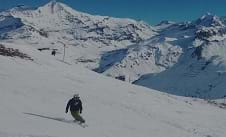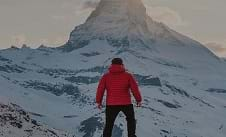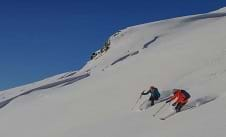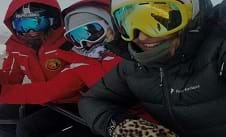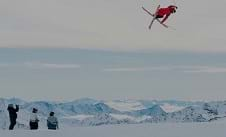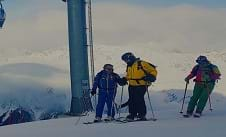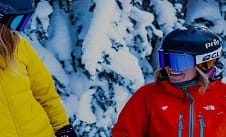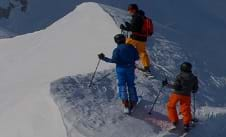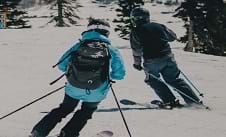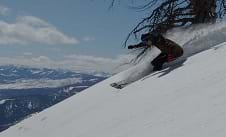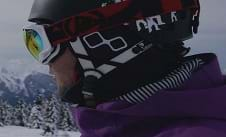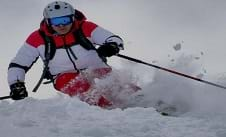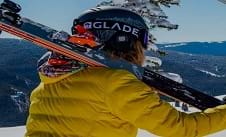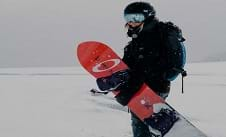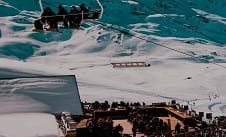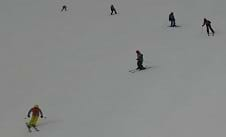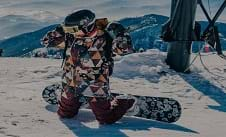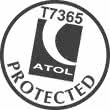Ski helmet guide
It is so incredibly important to wear a ski helmet on the slopes regardless of your ability or experience. The main reason is to protect yourself from serious head injuries, concussion or even death. If you are wearing a helmet in a collision the helmet is designed to protect you by absorbing the impact and stop your skull from taking the shockwaves. Not only is it safer for you to be wearing a helmet but they also keep your head warm, you can wear a hat underneath for an extra layer.
Wearing a helmet makes you feel safer and can give you more confidence as a skier, especially as a beginner, it takes some of the fear out of falling over. Wearing a helmet is also useful for your goggles, not only does it keep them in place and secure, but you can also raise them up and down easily depending on the weather. You can also personalise your helmet with stickers and attach a camera mount to the top to get some great footage.
with your own travel concierge. Don’t hesitate to drop us a line – we’ll
help plan your perfect Ski Holidays.
020 7770 6888 ← online or call ↴
020 7770 6888
Helmet size and fit
Size and fit of your helmet are essential. It only takes a few minutes to get your head measurements with a tape measure, and then you can ensure a perfect fit. You do not want your helmet too tight as this will be uncomfortable, you also do not want it too loose otherwise it will not be as protective. If you want to wear a thin hat underneath your helmet, be sure to allow for this in your measurements.
Helmet construction
With such a wide array of helmets available, it can be a daunting selection. The classic construction is the ‘Injection moulded ABS hard-shell,’ this offers a thicker hard shell glued to the inner foam. This design is usually more robust and costs less than other designs.
The alternative helmet is the ‘In-Mould’, these are a lighter helmet with better ventilation and are often available with added tech features.
Helmet styles
There are three main helmet styles available all based around the shell; this is the outer part of the helmet which will make contact during a fall.
The first type is the 'half shell' which is the least intrusive. This style covers only the top half of the cranium with a hard shell, are lightweight and do not block the ears. The second type is the 'full shell' which also provides a hard shell covering around the ears offering more protection and keeping your ears warm! The last is the 'full-face' shell that covers the whole front of your face - these are quite bulky and invasive.
Adjustable fit systems
The more advanced your helmet, the more adjustable fit systems will be available. The most basic adjustable system is the wheel/boa which can be found and the back of your helmet and can tighten up or loosen the inside of your helmet, these are great for children as you don't need to buy a new helmet each time your child grows.
There is also the inform fit system that lets you customise your helmet fit via adjustable venting that also provides airflow when required. The pad system offers a flexible pad at the base of the back of the helmet. This pad conforms to your head shape as you make adjustments to provide a customised, comfortable fit.
Other helmet features
There are plenty of other helmet tech features such as:
- Ear pads which are highly recommended as an addition to a half shell helmet as these will keep your ears warm.
- Built in audio or additional fitted audio plugs.
- Peaks at the front of the helmet offering a peak cap like shielding, and different styles of chin straps.
- Fluffy interiors
- Brightly coloured and patterned helmets - colour is important, but it should be one of the last things you consider, always ensure your chosen helmet is safe first!
Ski & snowboard helmet FAQ:
Yes, you can take a ski helmet as hand luggage. Generally, a helmet doesn’t count as your item of hand luggage. However, we recommend that you either put it inside your hand luggage bag or clip it to the outside of your bag if you’re looking to save space. Ensure it is securely fastened to prevent it from hitting anyone when walking up and down the plane isles.
Using a flexible tape measure, wrap the tape around the top of your head – above your eyebrows and below your hairline.
Measure the circumference from your forehead using centimetres. Then check the size guide for the helmet you are interested in.
While not a legal requirement you should still wear a ski helmet when on the slopes. You can be confident in your own abilities, but you never know what out of control person could come flying down the slope.
It’s not advised to wear a bike helmet skiing. Bike and ski helmets are designed to take different types of impacts. Falling off your bike is very different from falling off your skis.
You can get a new ski helmet very cheap today. At the time of writing, Decathlon are offering a men’s ski helmet for as little as £14.99. You can go to the complete opposite end of the spectrum and pay into the hundreds.






